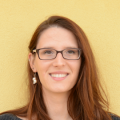PlanMap Team Members
|
|
|
|
|
|
|
|
|
|
|
|
|
|
 Matt BalmeInstitution: The Open University Matt Balme is a UK-based planetary scientist specialising in planetary geomorphology and geology. His first degree was an MSci in Physics with Space science from University College London in 1997, which was followed by a PhD in Geophysics awarded in 2001, also at UCL. He worked as a postdoc in the US and France before taking up a part-time research fellowship back in the UK while continuing his NASA funded work in the US. He is now permanently based in the UK at the Open University where he holds a Senior Lecturer (associate professor) position, and leads the Planetary Environments research group - part of the School of Physical Sciences. He is a team member of the ExoMars Rover Pancam team, and ExoMars Trace Gas Orbiter Guest Investigator with the CaSSIS camera team. He is part of the ExoMars Rover landing site selection working group. His current research activities are mainly focused on the ExoMars Rover mission, including geological mapping of landing sites, field trials of instruments, and end-to-end field trials of the mission as a whole. Involvement in PlanMap project: He helps in the production of geological maps for WP2 |
|
|
Cristian Carli
|
|
|
Nicolas MangoldInsitution: CNRS Nicolas Mangold is CNRS Research Director at the Laboratoire Planétologie et Géodynamique de Nantes. His research interests include planetary geology, geomorphology, mineralogy and chemistry. He is Involvement in PlanMap project: He will contribute especially to the WP5 in coupling orbital data and in-situ data with virtual reality to new extract geological information. |
|
|
|


 Gabriele Cremonese
Gabriele Cremonese Barbara De Toffoli
Barbara De Toffoli Elisa Facciolo
Elisa Facciolo Sabrina Ferrari
Sabrina Ferrari Alice Lucchetti
Alice Lucchetti Maurizio Pajola
Maurizio Pajola Luca Penasa
Luca Penasa Riccardo Pozzobon
Riccardo Pozzobon Nicola Praticelli
Nicola Praticelli Cristina Re
Cristina Re Francesca Zambon
Francesca Zambon  David Rothery
David Rothery Harald Hiesinger
Harald Hiesinger Carolyn van der Bogert
Carolyn van der Bogert 
 Francesca Altieri
Francesca Altieri Stéphane Le Mouélic
Stéphane Le Mouélic Gwénaël Caravaca
Gwénaël Caravaca Angelo Pio Rossi
Angelo Pio Rossi Erica Luzzi
Erica Luzzi This project receives funding from the European Union Horizon 2020 research and innovation program under grant agreement N. 776276.
This project receives funding from the European Union Horizon 2020 research and innovation program under grant agreement N. 776276.